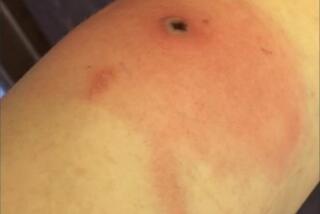Soviet A-Tests Blamed for Deaths, Illness in Siberia
- Share via
MOSCOW — Residents of a northern Siberia peninsula across the Bering Strait from Alaska die by age 45 on the average because of decades of radiation contamination as severe as that resulting from the Chernobyl disaster, a weekly newspaper reported Wednesday.
The newspaper, the liberal Moscow News, said that contamination of the Chukotka peninsula, where about 130,000 people live, was caused by previously secret Soviet testing of nuclear weapons in the 1950s and 1960s.
Authorities knew for perhaps 25 years that radiation in the area was twice as high as normal, the newspaper said, but the facts were covered up until a delegation led by members of the new, independent-minded Congress of People’s Deputies returned from a recent fact-finding visit to Chukotka.
It said the lawmakers found, in the safe of the local Communist Party organization, research by a Leningrad institute dating from the early 1960s that documented the acute health problems in the area.
“This is a crime against humanity,” the newspaper said. “It is time that we spoke about who is responsible for this and who is guilty of hiding the facts afterward. Are they retired, or do they still hold positions of power?”
The Soviet government has long acknowledged that there are health problems on the Chukotka peninsula, which is less than 25 miles from Alaska and has a population made up primarily of reindeer hunters and breeders and their families living in small, scattered settlements.
But official data indicated that the problems were caused by poor diet and lack of adequate medical care and gave the average life expectancy as 56.
In fact, the Moscow News said, documents found by the lawmakers, among them members of the Academy of Sciences, showed the average life expectancy to be 45, and that up to 10% of all full-term pregnancies resulted in stillborn babies.
As a result of the detonation of nuclear weapons, the newspaper said, “practically 100% of the indigenous population suffers from tuberculosis and 90% from chronic, non-specific lung ailments.”
The rate of death from cancer of the esophagus is the highest in the world, according to the studies carried out by the Leningrad scientific institute, the newspaper said.
It said the institute also found that residents of the region are 10 times more likely to suffer from liver cancer and that the number of cases of stomach cancer has doubled over the last 20 years.
It said that new forms of cancer are being discovered. Reindeer meat is a staple of the Chukotka diet, and people who ate irradiated reindeer meat suffered especially high contamination levels, it said. Reindeer in the region fed on contaminated lichen and thus were said to have become highly contaminated.
“Peaceful hunters and reindeer breeders are being forced to pay the price” for the nuclear testing carried out in the remote northeastern corner of the Soviet Union, the newspaper said. It called for greater openness about contamination in the region, saying this was a necessary first step for helping the radiation victims.
The newspaper, which has been in the forefront of earlier reporting on nuclear contamination, provided no details on the extent of nuclear testing in the region, or on the possible export of contaminated reindeer meat.
Earlier this year, it quoted Ukrainian farmers living near Chernobyl as saying that some of their animals had been born deformed.
The April 26, 1986, explosion of a reactor at the Chernobyl nuclear power plant killed 31 people and sent radioactive particles across most of Europe. At least 100,000 people were evacuated from the Ukraine and Byelorussia immediately after the explosion, and the official news agency Tass reported last month that 11,000 additional people were being moved from areas where high levels of contamination are still being recorded.
Wednesday’s report in the Moscow News came two days after Tass disclosed that plants and animals near the Chernobyl site were showing serious abnormalities, including giant trees with pine needles 10 times their normal size.
Tass said the authorities had created a sanctuary in regions affected by the accident in order to study wildlife and fauna.
More to Read
Sign up for Essential California
The most important California stories and recommendations in your inbox every morning.
You may occasionally receive promotional content from the Los Angeles Times.










